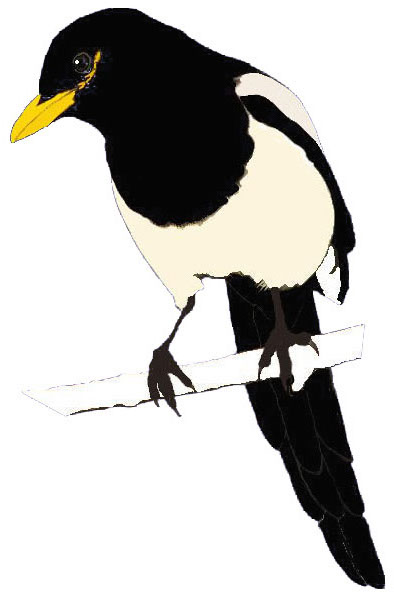Monochromatic Mallards
Monochromatic Mallards

Worldwide, species belonging to the mallard complex have been exposed and hybridized with introduced mallards throughout the world. Introgression has threatened several island species with extinction, and has even impacted mainland populations of monochrome mallards (Pacific Black Duck, Mottled Duck, and Mexican Duck). Engilis started working with the mallard complex in 2004 with the endangered Hawaiian Duck. Our goal was initially to determine the rate of hybridization and introgression between Hawaiian Duck and feral mallards and if we could develop an identification key to separate pure Hawaiian Ducks from hybrids. Collaborating with Dr. John Eadie and his lab (WFCB), this project quickly expanded to examine age related variation in plumage, evolutionary history, gene flow, and ultimately conservation and recovery. This study has laid the foundation for a new chapter in the recovery of the Hawaiian Duck, providing a new trajectory towards delisting as an endangered species. Our work then expanded to Florida Mottled Duck in 2010 and Mexican Duck in 2012 both faced with a similar threat of introgression with feral mallards as documented for Hawaiian Duck. The small project looking at Hawaiian Duck also coincided with a study conducted by Phil Lavretsky and Jeff Peters examination of the evolutionary patterns of the mallard complex. This research program has now expanded examining plumage traits, trait expression in relation to age, and gene flow between mallard and monochromatic ducks. The research has helped develop definitive plumage descriptions vetted by genetics for Hawaiian, Mottled, and Mexican ducks. These plumages, molt, and age-related traits have been overlooked for the better part of a century and led to the misinterpretation of mallard traits expressed in pure "brown ducks" as hybrid origin. These research avenues have led to an NSF funded project through Dr. Lavretsky's lab to examine genomic and morphological consequences of landscape-level hybridization between wild and domesticated congeners As a result, the Museum is largely collaborating with Dr. Phil Lavretsky and his lab at the University of Texas El Paso as we move forward. However, this work could only be accomplished through a broader partnership and foundation laid by researchers and agency biologists including: U.S. Fish and Wildlife Service, State of Hawaii, State of Florida, Wright State, Oregon State University, and Universidad Nacional Autonoma de Mexico. Numerous research papers are published and in preparation as work continues. The completed work also has created the largest specimen collection of genetically vetted monochromatic mallards in the world, now housed in the MWFB.
Publications
Wells, C. P., Lavretsky, P., Sorensen, M. D., Peters, J. L., DaCosta, J. M., Turnbull, S., Uyehara, K. J., Malachowski, C. P., Dugger, B. D., Eadie, J. M., and Engilis, Jr., A. Persistence of an endangered native duck, feral mallards, and multiple hybrid swarms across the main Hawaiian Islands. Molecular Ecology. 2019; Vol. 28, No. 24: 5203-5216.
Bielefeld, R. R., Engilis, Jr., A., Feddersen, J. C., Eadie, J. M., Tringali, M. D., and Benedict, Jr., R. J. Is It a Mottled Duck? The Key Is in the Feathers. Wildlife Society Bulletin. 2016; Vol. 40, No. 3: 446-455.
Lavretsky, P., Engilis, Jr., A., Eadie, J. M., and Peters, J. L. Genetic admixture supports an ancient hybrid origin of the endangered Hawaiian duck. Journal of Evolutionary Biology. 2015; Vol. 28, No. 5: 1005-1015.
Lavretsky, P., DaCosta, J. M., Hernández-Baños, B. E., Engilis, Jr., Sorenson, M. D., and Peters, J. L. Speciation genomics and a role for the Z chromosome in the early stages of divergence between Mexican ducks and mallards. Molecular Ecology. 2015; Vol. 24, No. 21: 5364-5378.
Lavretsky, P., Engilis, Jr., A., and Peters, J. L. Major histocompatibility I gene diversity in the critically endangered Laysan duck (Anas laysanensis). Pacific Conservation Biology. 2014; Vol. 20, No. 1: 86-93.
Lavretsky, P., McCracken, K. G., and Peters, J. L. Phylogenetics of a recent radiation in the mallards and allies (Aves: Anas): inferences from a genomic transect and the multispecies coalescent. Molecular Phylogenetics and Evolution. 2014; Vol. 70: 402-411.
Lavretsky, P., Hernández-Baños, B. E., and Peters, J. L. Rapid radiation and hybridization contribute to weak differentiation and hinder phylogenetic inferences in the New World Mallard complex (Anas spp.). The Auk. 2014; Vol. 131, No. 4: 524-538.
Fowler, A. C., Eadie, J. M., and Engilis, Jr., A. Identification of endangered Hawaiian ducks (Anas wyvilliana), introduced North American mallards (A. platyrhynchos) and their hybrids using multilocus genotypes. Conservation Genetics. 2008; Vol. 10: 1747.
